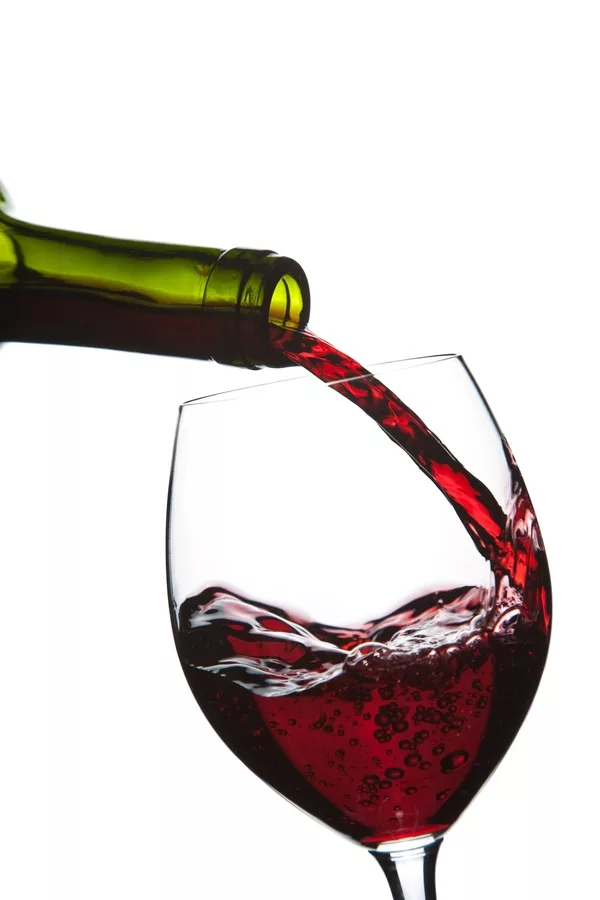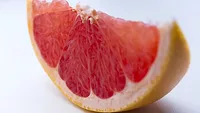Streamlined Analysis for Pesticide Residues and Illegal Additives in Wine

The global wine trade has burgeoned in recent decades as producers from numerous countries have entered the wine export business or increased their exports. A scan of the wines available at your own favorite wine shop will likely reveal a myriad of varieties and origins. You probably see long-established wines from Old World countries such as Italy, France, Germany and Spain. Perhaps you have also noticed an increasing number of choices from nontraditional locations such as Oceana, Africa, South America and North America. You may even find offerings from the Middle East, Far East and other regions not typically thought of as “good wine country.” This variety of choices is deliciously appreciated by wine lovers throughout the world!
Vintners in all of these locations share a common challenge—the need to protect the grapes from pest damage. Fungi are particularly troublesome for vineyards, along with harmful insects. Thus, the wine derived from grapes can contain residues of the fungicides and insecticides that have been applied to the fruits during the growing period. As the global wine trade has grown, so has the variety of regulatory limits on pesticide residues in wine.
In addition to pesticide residues, some producers add pigments during wine production to improve its color. Most of the synthetic pigment additives are illegal in many countries. Both pesticide residues and pigment additives in wine can pose health risks to consumers, leading countries to require certification that a wine is free of illegal additives and below health risk-based limits for pesticides. The grape growers and/or wine producers are responsible for obtaining analytical testing of their products by an accredited laboratory to certify compliance with country-specific regulations.
A New Streamlined Analytical Method
Until recently, the analysis of wine for pesticides and pigment additives has been completed using different methodologies,1–4 requiring separate analytical runs. These dual runs drive up the analytical cost and turnaround time due to the inherent duplication of labor hours, equipment use, reagent use and data validation and reporting.
A new, simpler method is now available that uses a streamlined workflow for the simultaneous quantitation of pesticide residues and pigment additives using a single analytical run. The new method was developed by PerkinElmer® Inc. and uses ultra-high-pressure liquid chromatography (UHPLC) to separate the analytes and mass spectrometry (MS) to detect and quantify the compounds. This optimized method provides faster turnaround time for sample analysis, reduces labor, equipment and material use, and provides consolidated data reporting. The end result is a simple, streamlined method that maintains the high levels of sensitivity, accuracy and precision required for certification.
Let’s take a look at the development process and validation results for this innovative methodology.
Target Analytes
Thirty-two potential wine contaminants were evaluated during method development including:
- 9 pigment additives
- 16 fungicides
- 5 organophosphate insecticides
- 2 neonicotinoid insecticides
These compounds are some of the most commonly found contaminants in grape wine and provide good coverage of the different chemical classes of contaminants routinely assessed.
Looking for quick answers on food safety topics?
Try Ask FSM, our new smart AI search tool.
Ask FSM →
Method Development and Optimization
A grape wine was selected at random to develop and optimize the methodology. The wine was first analyzed using the traditional, dual analytical runs method to confirm it was free of the target analytes. The wine was then spiked with known quantities of each target compound and analyzed using the new, single-run methodology. The spikes consisted of 100 µg/L of the pigments and 10 µg/L of the pesticides. The sample was centrifuged and the supernatant used for analysis without further filtration.
Iterative runs were completed to optimize the methodology by evaluating the effects of sample matrices and dilution factors on the analysis. Dilution factors of 1:2, 1:5, 1:10 and 1:20 were applied during sample preparation. The responses increased with increasing dilution, indicating that sample matrix effects (mainly ion suppression) could be reduced by sample dilutions. Thus, a 1:10 dilution was used thereafter.
Potential optimization using sample cleanup treatments was also investigated. Spiked and diluted samples underwent cleanup using primary secondary amines (PSA), C18 (carbon) and graphitized carbon black (GCB). PSA is typically used to remove sugars, fatty acids, organic acids and anthocyanin pigments, C18 is used to remove nonpolar interference and GCB is used to remove pigments, sterols and nonpolar interferences. The analytical results showed better responses and recoveries for most of the analytes without cleanup. Thus, no additional cleanup methods were used thereafter.
Hardware and Software
Chromatographic separation was conducted on a PerkinElmer UHPLC system using a Brownlee SPP C18 column (4.6 × 100 mm, 2.7 μm). The temperature of the column oven was set at 30 °C and the mobile phases consisted of (a) 5 mM ammonium acetate in water and (b) acetonitrile. The flow rate was 0.8 mL/min, and the injection volume was 10 μL.
Detection and quantitation were performed using a PerkinElmer QSight® 220 triple quadrupole mass spectrometer with a dual ionization source. Compound-dependent parameters such as collision energy and entrance voltage were optimized for each analyte by flow injection analysis. All instrument control, data acquisition and data processing was performed using Simplicity 3Q™ software.
Method Validation
As illustrated in Figure 1, all target analytes were detected with good peak shape and sensitivity. The limits of quantitation of the target compounds ranged from 0.5–50 µg/L. The matrix-matched calibration curves showed good linearity over three orders of magnitude with regression coefficients greater than 0.99 at concentration ranges of 1–1,000 µg/L for the pigments and 0.5–100 µg/L for the pesticides. Analyte recoveries were evaluated at concentrations of 50, 100 and 500 μg/L, and the mean recovery values ranged from 85.0% to 115.0%, with RSD less than 11%. These recovery values are well within the 70–120% range required for method validation.
 Figure 1. LC–MS/MS chromatograms of the nine pigments (100 μg/L) and 23 pesticides (10 μg/L) spiked in a wine sample.
Figure 1. LC–MS/MS chromatograms of the nine pigments (100 μg/L) and 23 pesticides (10 μg/L) spiked in a wine sample.
The optimized UHPLC-MS/MS methodology was validated using 10 wines from different producers and originating countries. Samples were prepared at a 1:10 dilution without post-centrifugation filtering or other cleanup methods applied. The samples were analyzed for the 32 target compounds using the optimized methodology and parameters.
 Twelve of the target analytes were detected in one or more of the wine samples as summarized in Table 1. The detected compounds included eight fungicides and four insecticides. No pigment additives were detected in any of the samples.
Twelve of the target analytes were detected in one or more of the wine samples as summarized in Table 1. The detected compounds included eight fungicides and four insecticides. No pigment additives were detected in any of the samples.
Conclusions
This new streamlined methodology provides a rapid “dilute-and-shoot” workflow for the simultaneous determination of pesticide residues and pigment additives in grape wine. The method has the advantage of analyzing pesticides and pigments in a single run with no sample cleanup needed to retain sensitivity, accuracy and precision. These advantages help wine producers meet the standards required for the routine monitoring of their wines by analytical laboratories around the globe and do so in a time- and cost-efficient manner.
For more information, please visit PerkinElmer.com.
References
1. Guo, J. et al. 2017. Food Fermentation Industries 43(1):192–198.
2. Wang, J. et al. 2010. Anal Bioanal Chem 396:1513–1538.
3. Li, Y. et al. 2013. Chin J Chromatogr 31(8):729–733.
4. Gui, Q. et al. 2015. J Chin Mass Spectrom Soc 36(2):148–155.







